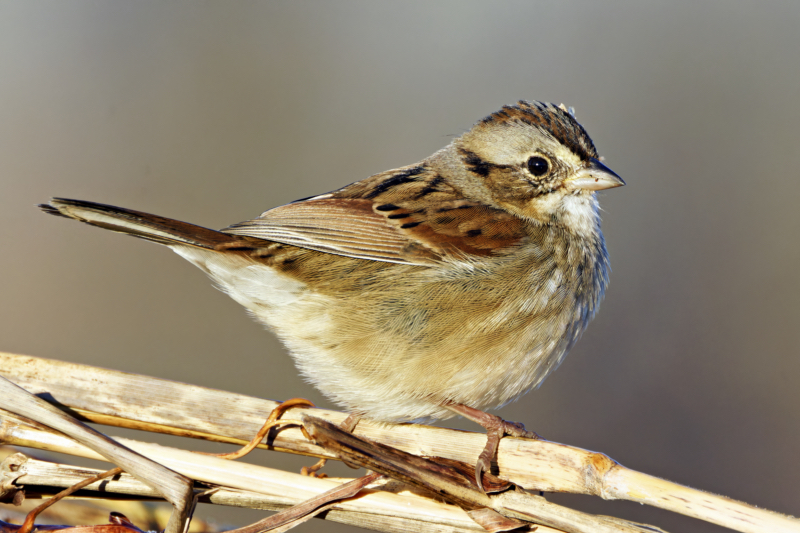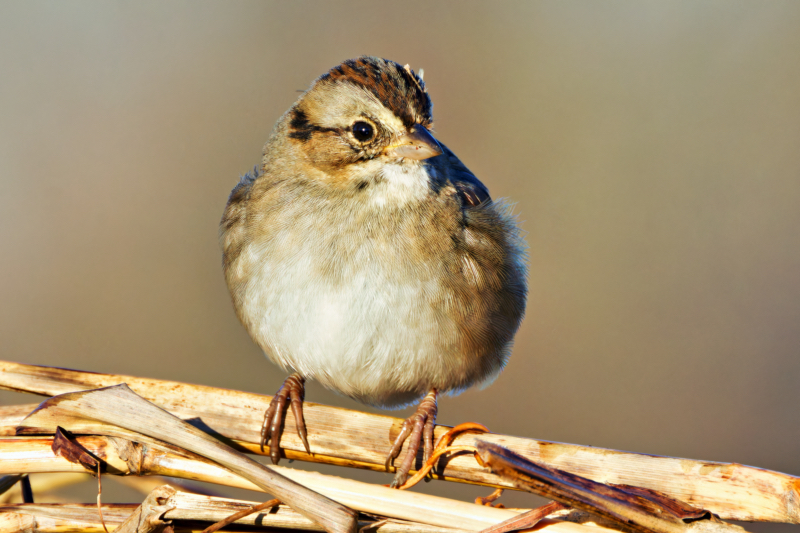Today, I’d like to share three pictures of a Swamp Sparrow that I took at the Sequoyah National Wildlife Refuge in Oklahoma.

I saw several of these birds in a thicket near the auto tour road. So, I parked my truck and waited for one to land on a perch that I thought would make a good photo. After a short time, one did and I was able to get these pictures of it in different poses.

Interestingly, these Swamp Sparrows were not around any water. I learned that during migration and winter, they may also be found in thickets and weedy fields away from water, although they often stay out of sight in these areas. Normally, this species is primarily associated with water-rich environments.

Last February, I photographed one of these birds near the edge of a pool of water at the same refuge. You can see the picture in my blog post “Capturing the Elusive Swamp Sparrow“.
Here are a few fascinating facts about Swamp Sparrows:
- Description: Swamp Sparrows are medium-sized New World sparrows with streaked rusty, buff, and black upperparts, an unstreaked gray breast, light belly, and a white throat. They have a vivid rusty cap and wings, and most males and a few females have rust-colored caps. Their face is gray with a dark line through the eye. They have a short bill and fairly long legs.
- Distribution and Habitat: They breed across the northern United States and boreal Canada, with a small number of distinct birds inhabiting tidal marshes from northern Virginia to the Hudson River Estuary. They can be found year-round in small numbers on the southern edge of their breeding range, but individuals are probably all migratory, primarily migrating to the southeastern United States. They generally forage on the ground near the water’s edge, in shallow water, or in marsh vegetation.
- Diet: During the breeding season, their diet is mainly arthropods, while in winter, it is principally fruit and seeds.
- Backyard Tips: Even if your backyard doesn’t include a wetland, you might attract Swamp Sparrows during migration to any lush ground cover such as ferns, lilies, blueberries, or many other plants, particularly dense plantings in moist areas.
- Conservation Status: The Swamp Sparrow has undoubtedly declined with the loss of marsh habitat, but it is still widespread and common. The localized salt-marsh race on the Atlantic Coast could be vulnerable to habitat loss.
Image Information (Second Image):
- Date: 12/06/23
- Time: 09:07 AM
- Camera: Canon EOS R7
- Lens: Canon RF 800mm F11
- ISO: 2000
- Aperture: 11
- Shutter: 1/1250
- Exp. Comp.: 0
- Lens (mm): 800
- Program Mode: Manual

Love your bird pictures
Awesome!